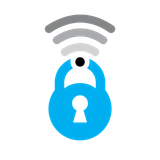Children's Online Privacy: Protecting Kids in the Digital Age

In today's digital world, children are increasingly exposed to the internet through social media, educational platforms, and entertainment sites. While the internet offers numerous benefits, it also poses significant privacy risks, especially for young users. This guide explores the importance of protecting children's privacy online and provides practical tips for parents to safeguard their kids.

Why Protecting Children's Online Privacy is Crucial
Children are particularly vulnerable to online privacy threats due to their innocence, curiosity, and lack of experience. Key concerns include:
- Data Collection: Many websites and apps collect personal information from children, often without their knowledge or understanding.
- Cyberbullying: Children can be targets of bullying and harassment online.
- Online Predators: Predators may use social media and other online platforms to exploit children.
- Identity Theft: Children's personal information can be used for identity theft, which may go unnoticed for years.
- Exposure to Inappropriate Content: The internet can expose children to harmful or inappropriate content.

How Social Media Platforms Handle User Data
Social media platforms collect various types of data from users, including personal information, behavioral data, and device information. This data is often used for targeted advertising, content personalization, and analytics. However, the extensive data collection practices raise significant privacy concerns, especially for children.


Key Regulations
- Children's Online Privacy Protection Act (COPPA): In the U.S., COPPA requires websites and online services directed at children under 13 to obtain parental consent before collecting personal information. It also mandates clear privacy policies and limits data retention[1][5].

Tips for Parents to Protect Children's Privacy Online
1. Prioritize Account Security
- Use Strong Passwords: Ensure that each account has a unique, complex password.
- Enable Two-Factor Authentication (2FA): Adds an extra layer of security by requiring a second form of verification.
2. Adjust Privacy Settings
- Review and Customize Privacy Settings: Regularly check and adjust privacy settings on social media platforms and other online services.
- Limit Data Sharing: Disable features that share your child's data with third-party apps and websites.

3. Educate Your Children
- Discuss Online Privacy: Teach your children about the importance of privacy and the risks of sharing personal information online.
- Set Clear Ground Rules: Establish rules for internet use, including what information can and cannot be shared.

4. Use Parental Control Tools
- Install Parental Control Software: Use software to monitor and restrict your child's online activities[4][7].
- Utilize Browser Controls: Set up browser controls to block access to inappropriate content and limit data sharing.
5. Monitor Online Activity
- Regularly Check Browsing History: Keep an eye on the websites your child visits and their online interactions.
- Encourage Open Communication: Let your child know they can come to you with any concerns or questions about their online experiences[9].
6. Address Cyberbullying and Online Exploitation
- Educate About Cyberbullying: Teach your children how to recognize and respond to cyberbullying[4][9].
- Report Suspicious Activity: Report any suspicious or harmful behavior to the appropriate authorities or platform administrators.
7. Protect Personal Information
- Limit Sharing of Personal Details: Advise your children not to share personal information such as their full name, address, phone number, or school name.
- Be Cautious with Photos and Videos: Ensure that any shared media does not reveal personal information or location.
Conclusion
Protecting children's online privacy is a collective effort that involves parents, educators, governments, and technology companies. By understanding the risks and implementing proactive measures, parents can help their children navigate the digital world safely and responsibly. Open communication, education, and the use of privacy tools are essential to safeguarding children's online experiences.
Here are the references you requested for your article on children's online privacy:
- Open Access Government: The importance of online security and privacy for children
- OHCHR: Children's right to privacy in the digital age must be improved
- Stay Safe Online: Protecting Our Kids' Data Privacy is Paramount
- Nemours KidsHealth: Online Safety (for Parents)
- Federal Trade Commission: Protecting Your Child's Privacy Online
- UNICEF Parenting: How to keep your child safe online
- South Carolina Attorney General: Parent's Guide to Internet Safety
- Comparitech: Protecting Children's Privacy Online - a Guide for Parents
- CISA: Keeping Children Safe Online
These references should provide comprehensive insights and authoritative information for your article on protecting children's privacy online.
Citations:
[1] https://consumer.ftc.gov/articles/protecting-your-childs-privacy-online
[2] https://www.comparitech.com/blog/vpn-privacy/protecting-childrens-privacy/
[3] https://www.openaccessgovernment.org/online-security-and-privacy-for-children/83109/
[4] https://www.ohchr.org/en/stories/2021/07/childrens-right-privacy-digital-age-must-be-improved
[5] https://staysafeonline.org/resources/protecting-our-kids-data-privacy-is-paramount/
[6] https://kidshealth.org/en/parents/net-safety.html
[7] https://consumer.ftc.gov/identity-theft-and-online-security/protecting-kids-online
[8] https://www.unicef.org/parenting/child-care/keep-your-child-safe-online
[9] https://www.scag.gov/internet-crimes-against-children/educator-s-guide-to-internet-safety/
[10] https://www.comparitech.com/blog/vpn-privacy/online-chat-safety-kids/
[11] https://www.cisa.gov/news-events/news/keeping-children-safe-online
[12] https://www.openaccessgovernment.org/u-s-government-doing-enough-protect-children-online/160137/
[13] https://www.ohchr.org/sites/default/files/Documents/HRBodies/CRC/5Rights_ChildrensReport_Digital.pdf
[14] https://staysafeonline.org/programs/events/protect-our-kids-privacy/
[15] https://kidshealth.org/en/kids/online-id.html
[16] https://www.ftc.gov/business-guidance/privacy-security/childrens-privacy
[17] https://www.unicef.org/rosa/stories/5-ways-protect-your-young-child-online
[18] https://www.scag.gov/internet-crimes-against-children/kid-s-guide-to-internet-safety/
[19] https://www.comparitech.com/parental-control/collecting-information-from-children/
[20] https://www.cisa.gov/sites/default/files/2023-07/SchoolSafety.gov_Online Safety Resources Infographic_508.pdf








